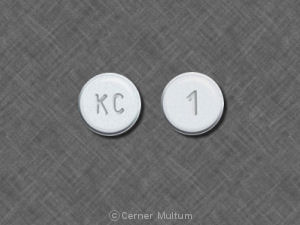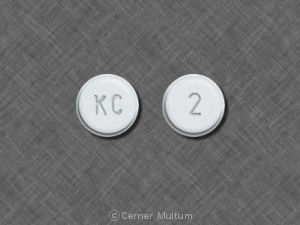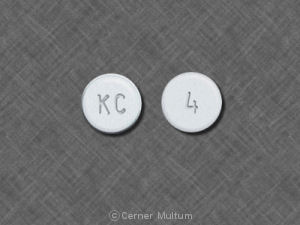What is the most important information I should know about pitavastatin?
You should not take pitavastatin if you have liver disease (including abnormal liver enzyme tests), or if you also take cyclosporine.
Do not take pitavastatin if you are pregnant.
Do not breast-feed while you are taking pitavastatin.
What is pitavastatin?
Pitavastatin is in a group of drugs called HMG CoA reductase inhibitors, or "statins." Pitavastatin reduces levels of "bad" cholesterol (low-density lipoprotein, or LDL) and triglycerides in the blood, while increasing levels of "good" cholesterol (high-density lipoprotein, or HDL).
Pitavastatin is used to treat high cholesterol in adults. Lowering your cholesterol may help prevent heart disease and hardening of the arteries, conditions that can lead to heart attack, stroke, and vascular disease.
Pitavastatin may also be used for purposes not listed in this medication guide.
What should I discuss with my healthcare provider before taking pitavastatin?
You should not use pitavastatin if you are allergic to it, or if you have:
- liver disease (including abnormal liver enzyme tests);
- if you are pregnant or breast-feeding; or
- if you are taking cyclosporine.
This medicine can harm an unborn baby or cause birth defects. Do not use pitavastatin if you are pregnant. Stop taking the medicine and tell your doctor right away if you become pregnant. Use effective birth control to prevent pregnancy while you are taking pitavastatin.
Pitavastatin can pass into breast milk and may harm a nursing baby. Do not breast-feed while you are taking pitavastatin.
To make sure pitavastatin is safe for you, tell your doctor if you have:
- kidney disease;
- history of liver disease;
- a thyroid disorder; or
- if you drink more than 2 alcoholic beverages daily.
Pitavastatin can cause a condition that results in the breakdown of skeletal muscle tissue, leading to kidney failure. This condition may be more likely to occur in older adults and in people who have kidney disease or poorly controlled hypothyroidism (underactive thyroid).
Do not give this medication to anyone under 18 years old without medical advice.
How should I take pitavastatin?
Follow all directions on your prescription label. Your doctor may occasionally change your dose to make sure you get the best results. Do not take this medicine in larger or smaller amounts or for longer than recommended.
You may take pitavastatin with or without food.
While using pitavastatin, you will need frequent blood tests to check your liver function.
You may need to stop using pitavastatin for a short time if you have:
- uncontrolled seizures;
- an electrolyte imbalance (such as high or low potassium levels in your blood);
- severely low blood pressure;
- a severe infection or illness;
- dehydration; or
- surgery or a medical emergency.
Pitavastatin is only part of a complete program of treatment that also includes diet, exercise, and weight control. Follow your diet, medication, and exercise routines very closely.
Store at room temperature away from moisture, heat, and light.
What happens if I miss a dose?
Take the missed dose as soon as you remember. Skip the missed dose if it is almost time for your next scheduled dose. Do not take extra medicine to make up the missed dose.
What happens if I overdose?
Seek emergency medical attention or call the Poison Help line at 1-800-222-1222.
What should I avoid while taking pitavastatin?
Avoid eating foods that are high in fat or cholesterol. Pitavastatin will not be as effective in lowering your cholesterol if you do not follow a cholesterol-lowering diet plan.
Avoid drinking alcohol. It can raise triglyceride levels and may increase your risk of liver damage.
What are the possible side effects of pitavastatin?
Get emergency medical help if you have any of these signs of an allergic reaction: hives; difficult breathing; swelling of your face, lips, tongue, or throat.
In rare cases, pitavastatin can cause a condition that results in the breakdown of skeletal muscle tissue, leading to kidney failure. Call your doctor right away if you have unexplained muscle pain, tenderness, or weakness especially if you also have fever, unusual tiredness, and dark colored urine.
Also call your doctor at once if you have:
- confusion, memory problems;
-
kidney problems --vomiting, pain in your side or lower back, little or no urinating, swelling, rapid weight gain; or
-
liver problems --nausea, upper stomach pain, itching, tired feeling, loss of appetite, dark urine, clay-colored stools, jaundice (yellowing of the skin or eyes).
Common side effects may include:
- mild muscle pain;
- pain in your arms or legs;
- back pain; or
- diarrhea, constipation.
This is not a complete list of side effects and others may occur. Call your doctor for medical advice about side effects. You may report side effects to FDA at 1-800-FDA-1088.
What other drugs will affect pitavastatin?
Tell your doctor about all other medicines you use. Certain other drugs can increase your risk of serious muscle problems, and it is very important that your doctor knows if you are using any of them:
- colchicine;
- gemfibrozil;
- fenofibric acid;
- fenofibrate; or
- medicines that contain niacin (Advicor, Niaspan, Niacor, Simcor, Slo-Niacin, and others).
This list is not complete. Other drugs may interact with pitavastatin, including prescription and over-the-counter medicines, vitamins, and herbal products. Not all possible interactions are listed in this medication guide.
Where can I get more information?
Your pharmacist can provide more information about pitavastatin.
Remember, keep this and all other medicines out of the reach of children, never share your medicines with others, and use this medication only for the indication prescribed.
Every effort has been made to ensure that the information provided by Cerner Multum, Inc. ('Multum') is accurate, up-to-date, and complete, but no guarantee is made to that effect. Drug information contained herein may be time sensitive. Multum information has been compiled for use by healthcare practitioners and consumers in the United States and therefore Multum does not warrant that uses outside of the United States are appropriate, unless specifically indicated otherwise. Multum's drug information does not endorse drugs, diagnose patients or recommend therapy. Multum's drug information is an informational resource designed to assist licensed healthcare practitioners in caring for their patients and/or to serve consumers viewing this service as a supplement to, and not a substitute for, the expertise, skill, knowledge and judgment of healthcare practitioners. The absence of a warning for a given drug or drug combination in no way should be construed to indicate that the drug or drug combination is safe, effective or appropriate for any given patient. Multum does not assume any responsibility for any aspect of healthcare administered with the aid of information Multum provides. The information contained herein is not intended to cover all possible uses, directions, precautions, warnings, drug interactions, allergic reactions, or adverse effects. If you have questions about the drugs you are taking, check with your doctor, nurse or pharmacist.
Copyright 1996-2018 Cerner Multum, Inc. Version: 5.01. Revision date: 4/24/2017.


